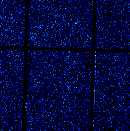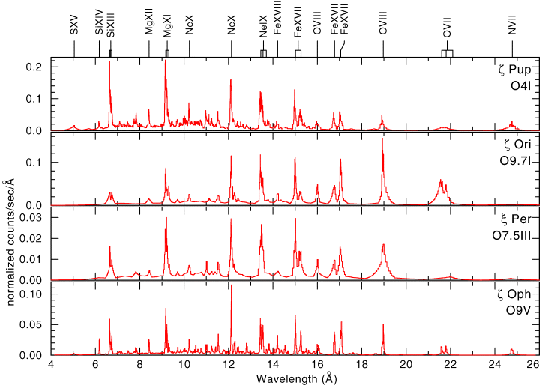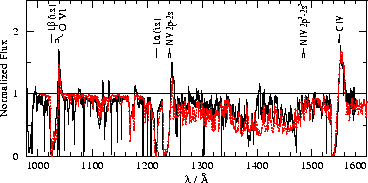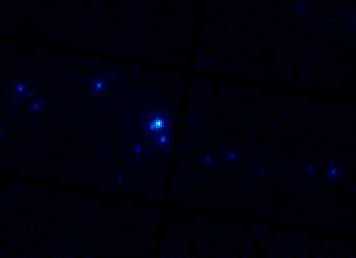 |
|
The Orion Trapezium Cluster: X-ray contours
of the Chandra X-ray observation overlaid onto the optical Hubble
image -- from Chandra
press-release 9/11/00. Magnetic confinement of stellar
wind is thought to be the source
of X-ray emission in the cluster most massive O star (Gagne et al.
2005)
|
|
|
|
XMM-Newton X-ray image of the sky-region
where WR 114 is located.

|
Not all stars with radiatively driven winds emit
X-rays. Rico Ignace, John C. Brown, and myself observed with XMM-Newton
a WR-C type star WR114. This stars has strong stellar wind
but was not detected in X-rays. We further reviewed all available
observations of WR-C type stars and concluded, that single stars of this
type are not X-ray sources. Later on I found that while some WR-N
stars are bright X-ray sources (Ignace et al. 2003) some other WR-N
type stars, e.g. WR61, WR157, WR16, has not been detected
with sensitive instruments (Oskinova 2005). Gosset et al. (2005)
reported lack of X-rays from WR-N star WR40. Possible reason is that
stellar winds in these stars are SO strong that X-rays are entirely absorbed.
However, another exciting possibility is that X-ray geneartion is different
and reflects different wind dynamics. I am currenly engaged in a
work to explain puzzling differences between properties of X-ray emission
among O- and WR-type stars |
Detailed high resolution X-ray spectra of O-type stars
were for the first time obtained by Chandra
X-ray observatory. The Chandra ACIS-S
meg spectra of bright single non-magnetic O-type are shown on
the right (Oskinova et al . 2006). These spectra have been "de-reddened",
i.e. altered in a way to look like as if there were no interstellar
absorption on the line of sight towards these
stars. The spectra are dominated by emission lines and are characteristic
for the optically thin plasma in collisional equilibrium heated up to few
million degrees. Meaning that all components of the gas (such as
electrons and ions) have essentially the same temperature and ions
are excited mainly by collisions with other particles. X-ray spectra
provide invaluable information about hot plasma dynamics, temperature,
density, and chemical composition. |
 |
 |
Only a small fraction of bolometric luminosity of O-type
stars is emitted in X-rays -- 0.00001 per cent. It means that stellar
wind consists mainly from "cool" material, heated till mere 10,000 degrees.
The million degree plasma consititues only tiny fraction of general stellar
wind. However, there is interaction between X-ray photons and cool
wind material. Figure on the left shows an ultraviolet part of the
spectrum of O-type supergiant Zeta
Puppis. The black line is the spectrum obtained by IUE
observatory.
The red line is a model spectrum calculated by means
of PoWR
stellar atmosphere model.
The OVI line can be reproduced by the model only
when X-rays are included in the model description.
|
| Emission lines in spectra of massive stars are formed
in fast expanding stellar wind and therefore are broad. Black circles
with error bars in Figure on the right show lines of NeX, FeVVII and OVIII
observed in the X-ray spectrum of Zeta
Orionis (Alnitak). The shape of the emission line, or line profile,
is determined not only by properties of hot plasma, it is also influenced
by the cool wind material, through which X-rays have to pass. It turned
out that X-ray emission line profiles can be reproduced only when assuming
that cool stellar wind is clumped, i.e. consists of density
enhancements and rarifications (imagine clouds in the Earth atmosphere).
Assumption of clumped stellar wind allows to model observed X-ray lines
remarkably well (red lines in the figure) without the need to alter
any of the stellar parameters. On the other hand, when assuming
that stellar wind is smooth (like blue blue sky without any cloud) the
X-ray lines cannot be modeled well (blue line). |

from Oskinova et al. 2006 |





